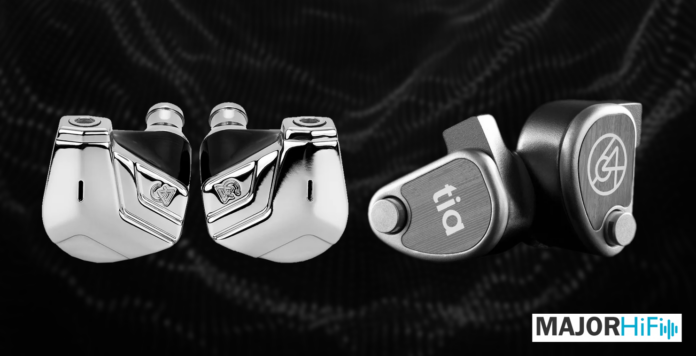The Astrolith is the latest IEM to come from Campfire Audio. It’s one of the priciest planar IEMs currently on the market. While there aren’t a lot of high-end IEMs like it in this price range, there are a few more established models that give it some significant competition. One of those models is the 64 Audio U12t, one of the most popular audiophile IEMs for both casual listening and stage performance. Does the planar driver make more of a difference with the Astrolith, or does the U12t’s balanced armature design still reign supreme?
What You Get
| Astrolith | U12t |
|
|
Look & Feel
Both the Astrolith and U12t have very specific designs established by the brand they come from. For instance, the U12t has the same basic shell as most 64 Audio IEMs which works for their structure. The Astrolith feels like Campfire’s recent Chromatic series IEMs, carrying a bigger and lighter shell than the U12t. This gives them both very different styles of fit. The Astrolith encompasses more of your concha, but it has more of a natural fit than the U12t. However, both IEMs end up being very comfortable, even though you can feel the U12t in your ear more than the Astrolith.
Design
The U12t uses a balanced armature configuration, while the Astrolith uses a dual planar system. Both IEMs are particularly easy to drive, even with the Astrolith’s planar design. I would suggest using upgraded DAC dongles for both earphones.
Soundstage
When we compare these two soundstages in terms of width, the U12t wins out easily. The channel separation is more elegant, showing a clearer left and right identity throughout the mix. The Astrolith has depth, but the presentation is more vertically narrow, even when sound elements are similarly easy to localize in the mix. I found an airy sensation to the Astrolith’s soundstage, whereas the U12t is more direct in its spatial position. Both IEMs contain great depth with intricate layers showcasing dimension, but only the U12t is able to communicate more precise movement across the stereo field.
Low End
Both IEMs are very articulate in the lows, as they feature great detail retrieval even if their timbre is slightly different. The Astrolith’s bass is felt deep in its foundation, while the U12t feels more distinctly unraveled and transparent. If you’re looking for more enticing bass grooves, the Astrolith has a more suitable timbre. However, compared to the U12t it’s still less detailed and realistic, but I don’t think that matters much when the tone has the feel to back it up.
Mids
The U12t is hard to beat here compared to a lot of different IEMs. Compared to the neutral Astrolith, the U12t delivers more flavor and accuracy. You still get some slight accentuation with the Astrolith, but it lacks breathability. With the U12t, you’ll find more details and artifacts brought to the front of the mix. It doesn’t feel like the U12t shies away from anything, whereas the Astrolith is veiled.
Highs
These IEMs share the most similarities in terms of high frequencies. The U12t gives the highs more room to move around, but they both have sparkle and clarity. Both IEMs have expressive treble detail that stays smooth and digestible so you won’t have to worry about brightness with either the U12t or the Astrolith.
Summary
The 64 Audio U12t is a hard one to beat. What makes it the clear winner for me is how much more technical the U12t sounds compared to the Astrolith. It feels more in line with the two-thousand-dollar range IEMs, whereas the Astrolith doesn’t in my opinion. There are some good qualities to the Astrolith, like its bass response, but I don’t think that’s enough to justify the price. The U12t does everything it can to justify its price sound-wise, and it does so effortlessly.
The Campfire Audio Astrolith and 64 Audio U12t are available at Audio46.
MAJORHIFI may receive commissions from retail offers.








